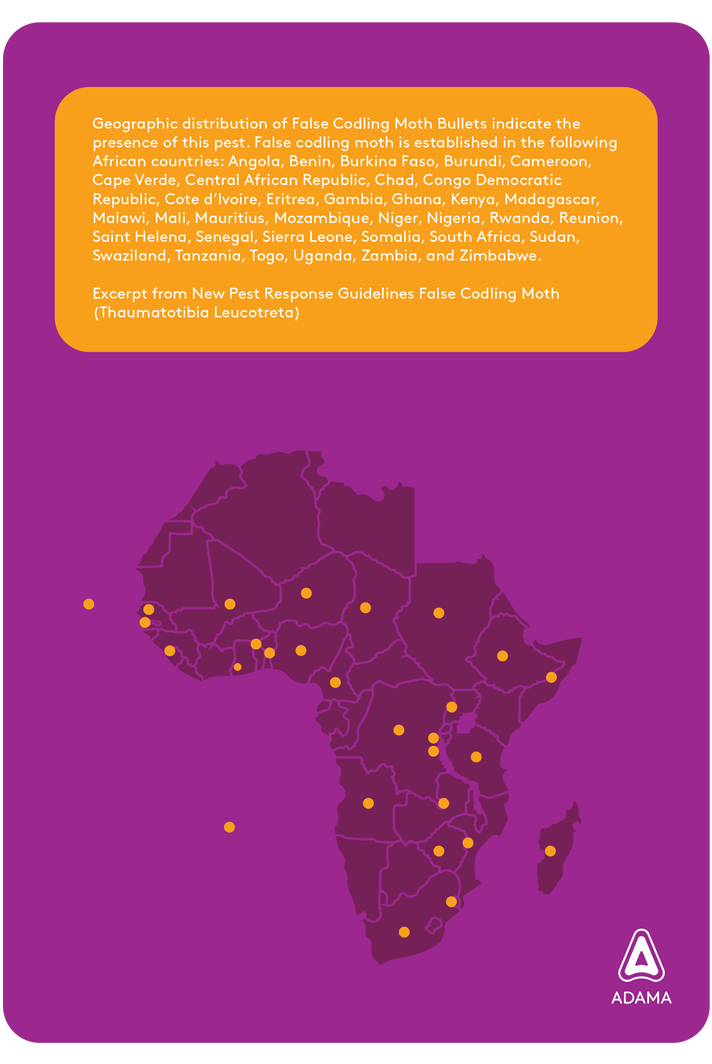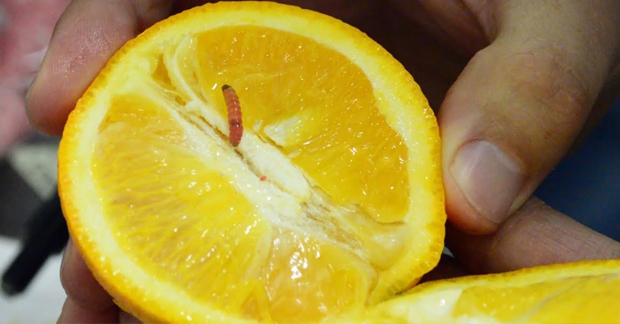
False Codling Moth: Crop Protection for Citrus Exporters

Producers of citrus in South Africa are mainly exporters. Almost 90% of the fruit produced in South Africa is sold in overseas markets. As with all farming, citrus producers have to deal with certain pests and diseases. If not managed effectively, disease/pest control can cost governments and farmers millions in lost earnings from lower yields and the destruction of crops. Consumers are also affected by the resulting higher prices.
Certain diseases and pests that occur in South Africa do not occur elsewhere. Our exporters recognise their responsibility for ensuring that these pests and diseases are not transferred via their produce. This is regulated by the World Trade Organization Agreement on the Application of Sanitary and Phytosanitary Measures and the International Plant Protection Convention, to which South Africa is a signatory.
False codling moth
False codling moth (FCM) is one of the pests affecting citrus fruits in Africa. It has quarantine status under phytosanitary regulations. In other words, all citrus exported from South Africa has to be free of FCM.

False codling moth is the most notorious citrus pest in South Africa. It is endemic to Africa south of the Sahara Desert.

The false codling moth lays her eggs on the rind of the citrus fruit. The eggs hatch and the larvae penetrate the fruit. Temperatures above 11.9 °C favour larvae development. Fruits from 15 mm in diameter till harvest can be attacked by FCM.

This means that a prolonged period of crop protection must be implemented, using all available methods. Control measures should include biological, chemical, cultural and cold-chain technology during storage and export. A combination of all these has been very successful in ensuring pest-free fruit for export.
Biological control involves the use of viruses applied to the tree that attack false codling moths. The most important cultural control method involves picking up fruit from the orchard floor throughout the season and burying it under at least 30cm of soil. Cold-chain techniques keep the fruit at cold temperatures for a specific length of time to kill any larvae present in the shipment.
Chemical pest control is under pressure because of residue requirements in overseas markets. Adama is committed to ensure undetectable residue levels, delivering citrus fruit free of blemishes and phytosanitary pests.